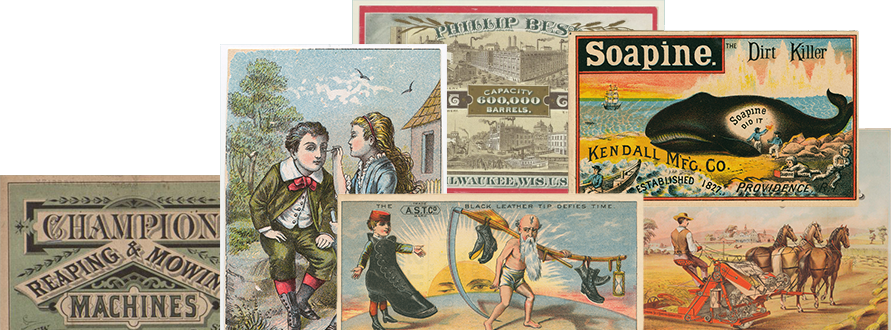The Art of
American
Advertising
American
Advertising
1865 - 1910

“Advertising is a distinct art, as much so as the art of coal mining or of engine building,” noted copywriter and author Nathaniel C. Fowler wrote in 1889.1 Fowler was referring to modern American advertising that burst onto the economic and cultural landscape after the Civil War. By the 1860s, the railroad industry had created a national network for the manufacture and distribution of industrial and consumer goods and, with it, the need for eye-catching, widespread advertising. Capitalizing on the growing industries of advertising and printing, companies with products to sell reached wholesalers, retailers, and home consumers through media of all shapes, sizes, colors, and imagery—from trade catalogs and trade cards to broadsides and posters to souvenir publications and novelty items. The emerging advertising profession after the Civil War represents a marketing revolution in which technology, creativity, and art were marshaled together to serve commercial ends. Drawing from Baker Library’s Historical Collections, The Art of American Advertising, 1865—1910 explores the role these burgeoning and extraordinarily inventive forms of advertising played in marketing mass-produced products to the evolving American consumer culture.
1 Nathaniel Clark Fowler, About Advertising and Printing. A Concise, Practical, and Original Manual on the Art of Local Advertising. Boston: A. M. Thayer & Co., 1889, p. 5.